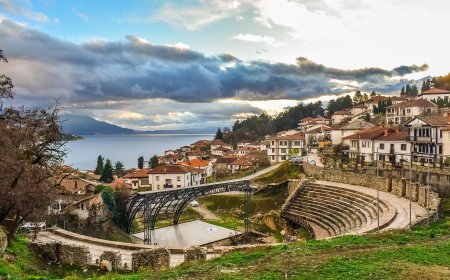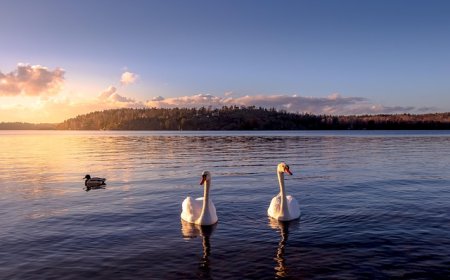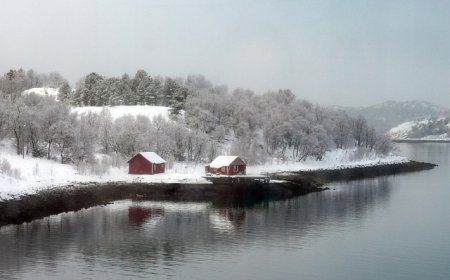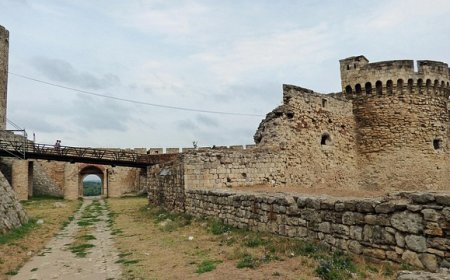Slovakia for Students: Geography, Culture, and History Explained
Discover the history, geography, and traditions of Slovakia in this engaging article for students. Learn about its castles, mountains, and modern culture.
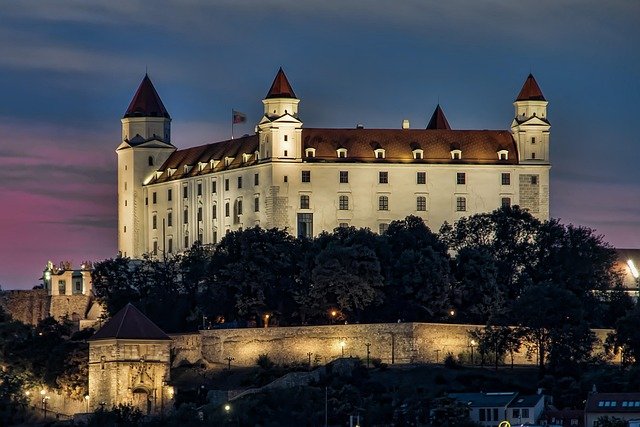
🇸🇰 Slovakia: A Mountainous Jewel of Central Europe
🗺 Introduction
Slovakia is a landlocked country in Central Europe, famous for its mountain ranges, medieval castles, and rich folk traditions. Though it’s not very large, Slovakia is full of natural beauty and has a fascinating history. It’s a place where modern life blends with old customs, and where hiking trails lead to ancient fortresses.
Slovakia became an independent country only recently, but its roots go back over a thousand years. In this article, you’ll learn about Slovakia’s geography, people, cities, and culture, and why this small country is such an important part of Europe.
🌍 Geography and Location
Slovakia borders the Czech Republic, Austria, Hungary, Ukraine, and Poland. It lies in the heart of Europe and has one of the most mountainous landscapes in the region. The most famous mountains are the High Tatras, part of the Carpathian Mountain range, with snowy peaks perfect for skiing and hiking.
Besides mountains, Slovakia also has rivers, lakes, and deep valleys. The Danube River passes through the capital, Bratislava, and is used for trade and transportation. Much of the countryside is covered in forests, farmland, and small villages with wooden houses and traditional churches.
Slovakia has four seasons, with cold winters and warm summers. Spring and autumn are great times to explore nature and enjoy outdoor festivals.
🏙 Cities and Regions
The capital city of Slovakia is Bratislava, located on the Danube near Austria and Hungary. It’s the largest city and home to Bratislava Castle, museums, universities, and government offices. The Old Town has cobblestone streets, colorful buildings, and cozy cafés.
Other important cities include:
- Košice, known for its cathedral and cultural events
- Prešov, a historic town with Gothic churches and art galleries
- Žilina, surrounded by mountains and ski resorts
- Nitra, one of the oldest towns with ancient ruins
Slovakia is divided into eight regions, each with unique traditions, foods, and dialects.
👨👩👧👦 People, Language, and Culture
Slovakia has about 5.4 million people. The main language is Slovak, similar to Czech. In some areas, people also speak Hungarian, Romani, or Ukrainian. English is taught in schools and spoken in many cities.
Slovaks are known for being friendly, hardworking, and proud of their roots. Traditional folk music, colorful costumes, and dancing are part of everyday life, especially during festivals.
Folk arts like wood carving, embroidery, and ceramics are passed down through generations. National pride is shown through holidays, parades, and storytelling about Slovakia’s legends and heroes.
🍽 Food and Traditions
Slovak cuisine is simple, hearty, and full of flavor. Many meals use potatoes, cabbage, cheese, and pork. In villages, meals are homemade and shared with neighbors.
Popular foods include:
- Bryndzové halušky, potato dumplings with sheep cheese and bacon
- Kapustnica, cabbage soup with sausage and mushrooms
- Lokše, potato pancakes with sweet or savory fillings
- Koláče, pastries with fruit, nuts, or cheese
- Trdelník, sweet spiral pastry at markets
Holidays like Christmas, Easter, and Slovak National Uprising Day are celebrated with special foods, music, and community events. Easter Monday includes a tradition of sprinkling blessings.
🏛 History of Slovakia
Slovakia’s history includes the Great Moravian Empire in the 9th century, one of the earliest Slavic states. Later, it was part of the Kingdom of Hungary for centuries.
After World War I, Slovakia joined Czechoslovakia. During World War II, it was a separate state under German control. Post-war, Czechoslovakia fell under communist rule until the Velvet Revolution in 1989. In 1993, the Velvet Divorce peacefully split Slovakia and the Czech Republic.
Today, Slovakia is a proud EU and NATO member.
🌿 Nature and Environment
Slovakia is full of natural beauty. The Tatra Mountains host alpine lakes, waterfalls, and wildlife like lynx, bears, and eagles. National parks such as Tatra National Park and Slovak Paradise are popular for outdoor adventures.
Caves like Domica Cave and Ochtinská Aragonite Cave are protected and toured by visitors. Rivers offer canoeing, and forests provide peaceful walks.
Environmental protection is growing. Schools teach recycling, renewable energy, and caring for nature.
📚 Vocabulary List
| Word | Definition |
|---|---|
| Carpathian Mountains | A large mountain range in Central and Eastern Europe |
| Bryndza | A soft, salty sheep cheese popular in Slovakia |
| Folk costume | Traditional embroidered clothing worn at festivals |
| Velvet Divorce | The peaceful split of Czechoslovakia into two countries in 1993 |
| Danube | A major European river flowing through Bratislava |
| Trdelník | A sweet spiral pastry cooked over flames |
| Slovak | The official language of Slovakia |
| Great Moravian Empire | An early Slavic state covering parts of modern Slovakia |
👧🧒 Kid-Friendly Summary
Slovakia is a small country full of mountains, castles, and forests. It has fun food like cheese dumplings and sweet pastries. The capital is Bratislava, where the Danube River flows and old castles sit on hills. People in Slovakia speak Slovak and enjoy music, dancing, and colorful clothes during festivals.
A long time ago, Slovakia was part of Czechoslovakia, but now it’s its own country. People love hiking in the mountains, exploring caves, and sharing traditions with friends. It’s a peaceful and beautiful place to visit and learn about!
🧠 Interactive Quiz: Test Your Slovakia Knowledge
1. What is the capital of Slovakia?
A) Košice
B) Vienna
C) Bratislava
D) Budapest
2. What mountain range runs through Slovakia?
A) Alps
B) Rockies
C) Carpathians
D) Andes
3. What is the name of Slovakia’s cheese and dumpling dish?
A) Goulash
B) Trdelník
C) Bryndzové halušky
D) Schnitzel
4. Which river flows through Bratislava?
A) Rhine
B) Danube
C) Thames
D) Seine
5. What event in 1993 made Slovakia independent?
A) Iron Curtain
B) Velvet Divorce
C) Civil War
D) World War II
6. What language is spoken in Slovakia?
A) Slovak
B) Czech
C) German
D) Hungarian
7. What is Trdelník?
A) A soup
B) A musical instrument
C) A type of pastry
D) A dance
8. What is Slovakia known for in nature?
A) Deserts
B) Oceans
C) Mountains and caves
D) Rainforests


















































